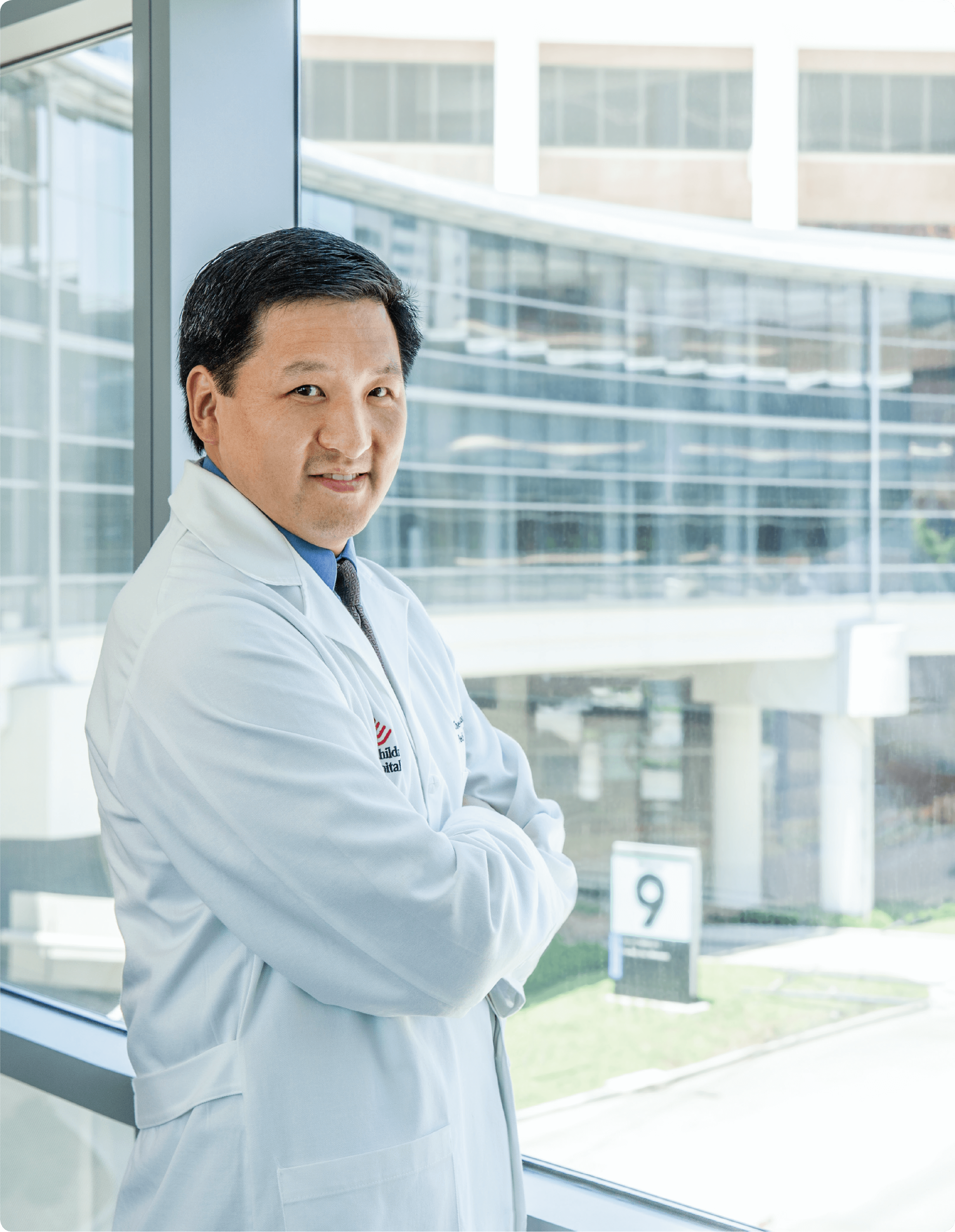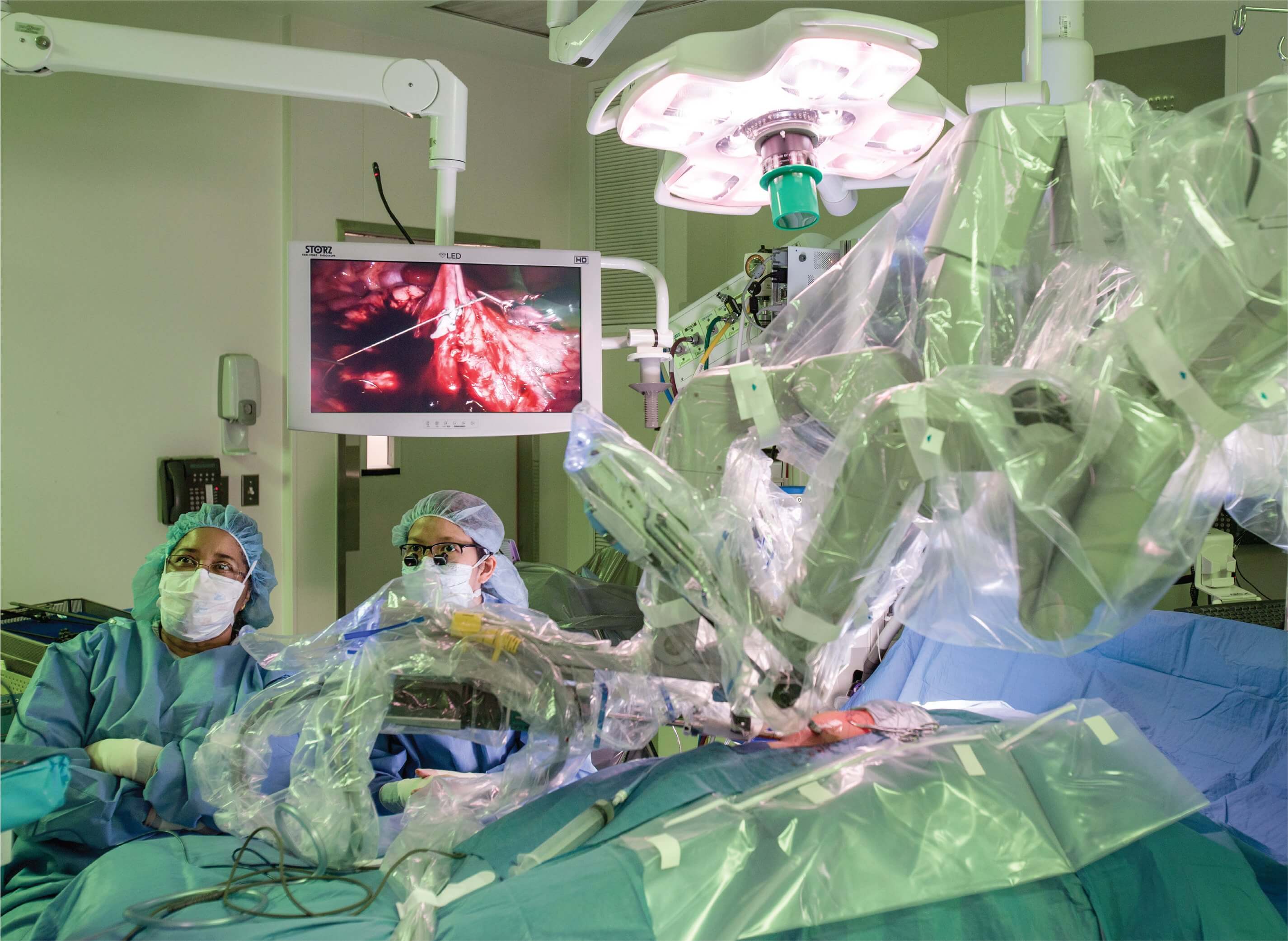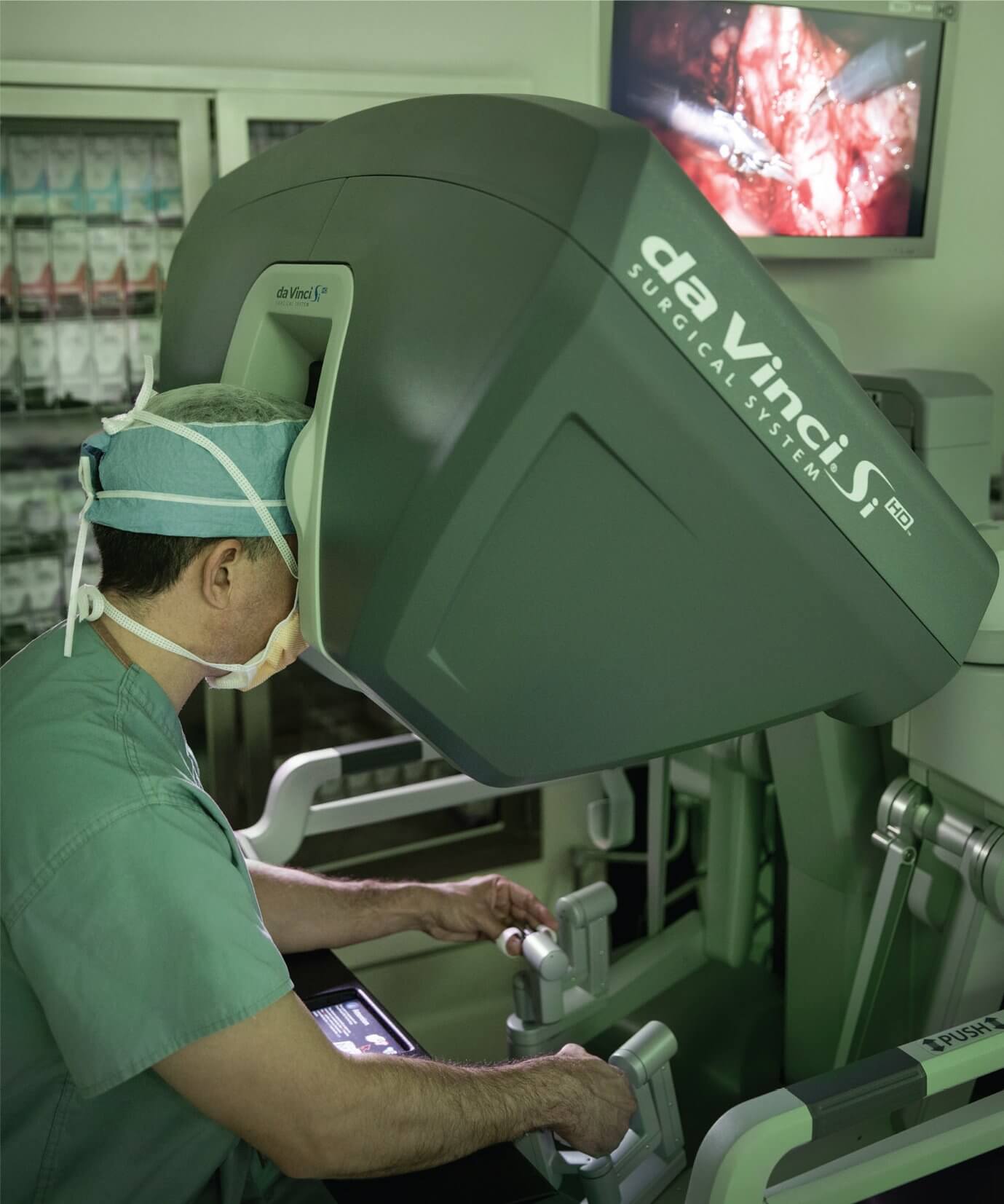Chester Koh, M.D., FACS, FAAP

Q | Can you tell us about your formative years and how you got into medicine?
A | I was born and raised in Los Angeles, California. I would say that my first thought about wanting to become a doctor probably came from my pediatrician, Dr. Romans. I always loved going to the doctor because it was Dr. Romans and even when he gave me as shot. So I think that I was always destined to enter a pediatric-related field in medicine like pediatric urology.
I attended a great junior high and high school that is now called Harvard Westlake in N. Hollywood, California, and then UC Berkeley as an undergraduate where I majored in mechanical engineering, so I think that’s where the science background came from. I had always been interested in building things and putting things together. I thought about becoming a doctor, but I wanted to take the safe route and went for the engineering degree. An engineering co-op after my third year at UC Berkeley, where I worked for Dow Chemical in Walnut Creek, California, allowed me to obtain some hands-on engineering experience.
Even with the science background, I also knew that I liked the patient care aspect of medicine because it is so rewarding. So I’ve been attempting to put the two fields (engineering and medicine) together for my whole career to date. So, here I am.
Q | Have you had any mentors throughout your career?
A | I consider myself to be very lucky to have had a lot of great mentors, all of whom have shown me the value of hard work in their careers. Some examples are: at Tufts University School of Medicine in Boston, Dr. Grannum Sant, who was my urology chairman when I was a medical student, who also has had a long career in the pharmaceutical industry; Dr. Donald Skinner, my chairman at USC during my urology residency; and Dr. Alan Retik, one of the great leaders in pediatric urology, who was my chairman at Boston Children’s Hospital/Harvard Medical School during my pediatric urology fellowship.
For robotic surgery, I give thanks to Dr. Craig Peters at Children’s National Medical Center in Washington D.C. for teaching me about the new field of pediatric robotic surgery while we were at Boston Children’s, as well as Dr. Inderbir Gill, a true pioneer in minimally invasive and robotic surgery who succeeded Dr. Skinner as chairman at USC. He is a very driven, focused, and accomplished surgeon and academic physician. I feel that I have been blessed with the opportunity to work with so many great mentors.
Q | What was it about robotic surgery and pediatrics that inspired you?
A | Robotic surgery gives us the ability to do what we already know how to do with open surgery, except now we can do so in a minimally invasive fashion, and I think that’s the key advantage of the technology. This is especially important in our field of pediatric urology where we have many reconstructive procedures for our small patients. We have been doing laparoscopic surgery for many years, where we can easily remove damaged or diseased tissue, and we can try to fix things using conventional laparoscopic surgery, but it requires a completely different skillset from what we have learned through open surgery. So finally the technology has caught up to this with robotic surgery, where we can now do the same surgical maneuvers that we perform with our hands, but now we can do them through tiny incisions with the robot. So for many procedures in pediatric urology, the need for large incisions is quickly going away, especially for internal organs like the kidney, where we previously needed to make large and painful incisions just to get to the organ. We no longer have to do that. The ones who truly benefit are the kids. They are going home faster to be with their families, and the parents don’t have to take too many days off from work since they are only spending one night in the hospital instead of two, three, four, or more. They have much smaller scars and therefore less need for pain medications, which helps them to recover faster. Because of these, we believe that all kids who can benefit from robotic surgery should receive it.
Q | You built out a substantial robotics program at USC. Tell us a little bit about that and what drew you here to Texas Children’s to do the same at the Texas Medical Center.
A | In pediatrics, it is a reality that we have to partner with our adult colleagues, as pediatrics will always involve a smaller population than the adult world. At USC, I had the opportunity to partner with top-notch innovative adult surgeons like Dr. Gill, as well as his partners, Dr. Mihir Desai and Dr. Monish Aron, who came with him from Cleveland Clinic to USC, where they brought a world of minimally invasive and robotic surgery experience. I was able to partner with them to help build our robotic and minimally invasive experience for children, because of what they had done in the adult world. It’s a partnership that I greatly cherished. With the Texas Medical Center, I see the same opportunities for partnership here. For example, in March, we hosted the third annual Pediatric Urology Robotic Surgery Hands-on Training Course here in Houston after the first two years were held in Northern California. Part of having a hands-on training course is that you need a lot of robots. It is not just watching videos and observing other people doing robotic surgery. You can best learn when you are at the robotic console. So we needed a place that has enough of these multi-million dollar robots (we used six), and the training center to support them, and that is right here in the Texas Medical Center at MITIE at Houston Methodist Hospital, which is next door to Texas Children’s Hospital. With an esteemed panel of expert pediatric urologic robotic surgeons from across the U.S., as well as Texas Medical Center-based experts including Dr. Alvin Goh from Houston Methodist, an adult urologic robotic surgeon who served as co-director of the course, we were able to host pediatric urologic surgeons including surgeons from Japan, Turkey, Canada, and others from institutions here in the U.S., where they came to Houston and the Texas Medical Center for hands-on robotic training. That was the type of partnership that I was envisioning that we were able to bring to reality. And I think that’s a great example of collaboration for Texas Children’s, Houston Methodist, and Baylor College of Medicine, as well as the Texas Medical Center.
Q | You are about to surpass 100 robotic cases at Texas Children’s Hospital. With all of the capabilities that you see today, what will the program look like in three years?
A | We will keep moving towards the next frontiers. We already perform multiple-site robotic surgery, but we would like to eventually move toward virtually scarless surgery all through a single incision in the belly button. The belly button looks like a scar already, hence the virtually scarless description. In addition, for pediatrics, we also need smaller instruments for our patients, but those that can still perform the required tasks. We are using instruments that have been designed for adult patients, but we need instruments that are designed with the pediatric patient in mind. Over time, we will continue to see the expansion of pediatric urology cases for which the robot can be used, with expansion to other pediatric specialties as well.
Q | Does moving to a single port require a complete revision of the triangulation approach that you use today?
A | It may, but technology may help surgeons to overcome this. Surgeons understand the need for triangulation with minimally invasive cases, and some of the prototypes of future instruments are fantastic, where multiple instruments are traveling through a single channel, but then expand to a multi-pronged instrument inside the body cavity that provides triangulation. This again leads to the dilemma regarding medical devices in children. A lot of these are being built for adults, and may not be adaptable for use in children. For example, the curved instruments and ports that we often used for single-incision surgery have a fixed, built-in amount of curvature. In adult patients, these fixed articulation lengths are adequate when there is a lot of space in the body cavity. However, with pediatrics, you usually have a shorter working distance between the skin and, for example, the kidney. And if this curve is outside the body, you have lost all advantages of that instrument. We need new technology for single port and minimally invasive virtually scar- less surgery, but it should be adapted for children as well.
Q | Most parents wouldn’t know whether a program has a robotics program or not. What advice do you have for parents looking for the right surgical program for their child?
A | Especially for pediatric patients, one feature can be surgical experience. Dr. Patricio Gargollo recently joined our pediatric urology division and together we have one of the largest pediatric robotic surgery experiences with over 500 robotic cases in children to date. However, this is only one factor. Surgery and especially robotic surgery, is a team effort, and the one guarantee that we can make is that the team at Texas Children’s Hospital, which includes the nurses, the staff, and the rest of nearly 10,000-member family at the hospital, is dedicated to caring for children. This is reflected in everything that we do.
Q | Relative to other programs, that’s extremely large. When you look at the top programs in the country, what kind of volume are they seeing?
A | Since pediatrics is a smaller world, a handful of places are going to reach 100 pediatric cases per year and usually at the larger children’s hospitals, and it does take time to work up to that level. We’ve had a running start for our program, since both Dr. Gargollo and I are bringing our previous experience to Texas Children’s, and serve as its physician champions. The fact that we reached a hundred cases in such a short amount of time is not surprising, since we have done it before.
Q | Let’s talk about technology. Industry does not put a lot of emphasis on pediatrics because of the lower patient volume compared to the adult market. Do you see potential within the Texas Medical Center for innovation in pediatric medical devices?
A | Having been one of the co-founders of an, FDA-funded pediatric medical device consortium—the Southern California Center for Technology and Innovation in Pediatrics – and near a large number of medical device companies, I see the same necessary elements that we had in Southern California here in Houston as well. It’s not only the amazing energy, but also the amazing talent and experience. I think the difference is that each place has varying strengths. Some of the strengths that I’ve learned about here in Houston are NASA / Johnson Space Center, and engineers at associated companies such as Jacobs. But we also have the engineers associated with the abundance of oil and gas engineering technology. This complements the medical and scientific talent within the Texas Medical Center, all next door to each other. There are great minds at work in Houston.
So we have a lot of talent here, but there is also the commercialization drive. One only needs to open the Houston Chronicle on a daily basis to learn about the growing number of startups and new companies. While physicians, nurses, and allied health professionals are identifying unmet needs in the hospital after experiencing the shortcomings of the current medical products, with all of the local talented engineers, I see example after example of working partnerships. That’s what I see here at the Texas Medical Center. You have top-notch universities and hospitals, all next door to each other. And then you have experienced people in town who can take prototypes to the commercialization process, get that product manufactured and then bring them into the clinics. I think that’s what we all want to see, the finished medical device that is helping patients.
I agree with the call by the FDA for more focus on pediatric medical devices. We know that the pediatric medical device pipeline is a broken one. The pediatric medical device market lags the adult market by ten years. I think that many of us in pediatrics realize that we need a different approach to pediatric devices, because we know that the usual pathway for adult devices doesn’t seem to work in pediatrics. So we want to be able to take the expertise and experience that we see in the adult market, and bring it to pediatrics. Currently, most devices are built for adults and somehow either miniaturized or adapted for pediatrics. But I think that many of us in the pediatric device field would love to see more focus on the pediatric first model, where devices are designed and implanted with the pediatric patient in mind, and not just an adaptation of the adult product. It appears that the solution may lie in academics, where the pediatric device projects must be further developed before advancing to the next stages.
Often the financial hurdles due to the smaller market in pediatrics hinder many of these pediatric projects. However, my hope is that many follow the examples of successful pediatric device companies out there that enjoy the pediatric space because it’s not a crowded field. They have found their niche and they are happy to be in a smaller market for which they are the dominant player, as opposed to going into an adult market like the cardiovascular market, which is quite crowded.
Q | How have you been adjusting to Houston since your move from Los Angeles?
A | I would just say it has been exciting—the amount of activity, the hustle and bustle. I think one thing you realize here is that the sky is the limit. People have the resources, they have the will, they have the experience and just the drive to move very quickly. And especially with all of these institutions in the Texas Medical Center, they appear to spur each other to do their best. So they are always trying to think about what the next best step is. Then they have the resources to act upon them, and finally quickly advance to the next frontier and be ready for the frontier beyond that.
Q | Any closing thoughts?
A | I see this as a great time for Texas Children’s and the Texas Medical Center. It’s a time of major expansion. We are expanding into more areas to support the population growth. We are hiring great people, who are bringing their talent to Houston and into the medical center. Dr. Patricio Gargollo is one example of that. He and I are working together to build a pediatric robotic surgery program that is really unique, that builds upon our previous experiences and is quite complementary. He will take the robotic field and especially the reconstructive field in pediatric urology to new heights. It’s part of a world class program, which is part of a world class hospital and medical center and in a world class city. It is an exciting time to be here.






